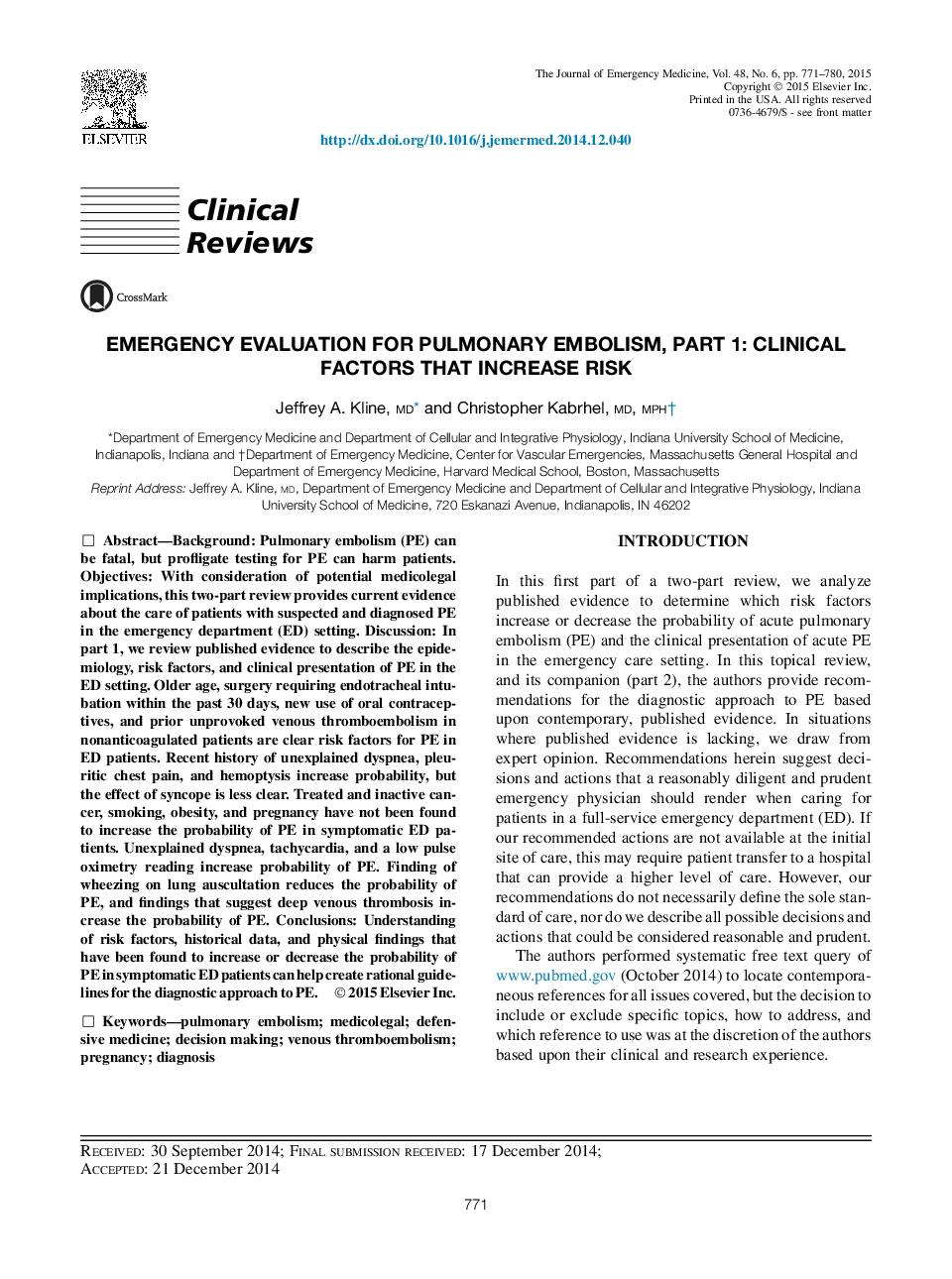| کد مقاله | کد نشریه | سال انتشار | مقاله انگلیسی | نسخه تمام متن |
|---|---|---|---|---|
| 3246681 | 1589124 | 2015 | 10 صفحه PDF | دانلود رایگان |

BackgroundPulmonary embolism (PE) can be fatal, but profligate testing for PE can harm patients.ObjectivesWith consideration of potential medicolegal implications, this two-part review provides current evidence about the care of patients with suspected and diagnosed PE in the emergency department (ED) setting.DiscussionIn part 1, we review published evidence to describe the epidemiology, risk factors, and clinical presentation of PE in the ED setting. Older age, surgery requiring endotracheal intubation within the past 30 days, new use of oral contraceptives, and prior unprovoked venous thromboembolism in nonanticoagulated patients are clear risk factors for PE in ED patients. Recent history of unexplained dyspnea, pleuritic chest pain, and hemoptysis increase probability, but the effect of syncope is less clear. Treated and inactive cancer, smoking, obesity, and pregnancy have not been found to increase the probability of PE in symptomatic ED patients. Unexplained dyspnea, tachycardia, and a low pulse oximetry reading increase probability of PE. Finding of wheezing on lung auscultation reduces the probability of PE, and findings that suggest deep venous thrombosis increase the probability of PE.ConclusionsUnderstanding of risk factors, historical data, and physical findings that have been found to increase or decrease the probability of PE in symptomatic ED patients can help create rational guidelines for the diagnostic approach to PE.
Journal: The Journal of Emergency Medicine - Volume 48, Issue 6, June 2015, Pages 771–780